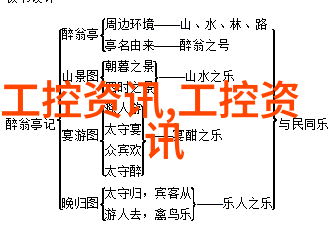您现在的位置是: 首页 - 资讯 - 工业废气净化器能否真正根除污染 资讯
工业废气净化器能否真正根除污染
2025-05-22 【资讯】 0人已围观
简介在这个快速发展的工业时代,随着生产力的不断提升,工业废气问题日益突出。为了解决这一问题,一种重要的技术就是工业废气净化器。这项技术已经被广泛应用于各种工业领域,如石油、化学、冶金等。但是,我们是否真的能够依靠这些设备来彻底消除污染呢?在探讨这个问题之前,让我们先了解一下什么是工业废气净化器。 一、什么是工业废气净化器? Industrial waste gas purification
在这个快速发展的工业时代,随着生产力的不断提升,工业废气问题日益突出。为了解决这一问题,一种重要的技术就是工业废气净化器。这项技术已经被广泛应用于各种工业领域,如石油、化学、冶金等。但是,我们是否真的能够依靠这些设备来彻底消除污染呢?在探讨这个问题之前,让我们先了解一下什么是工业废气净化器。

一、什么是工业废气净化器?
Industrial waste gas purification refers to the process of removing harmful substances from industrial waste gases through various technologies and equipment. The purpose is to reduce or eliminate the pollution caused by these gases, so as to protect the environment and human health.

二、为什么需要工业废气净化器?
The rapid development of industry has led to an increase in industrial waste gas emissions. These gases contain a variety of pollutants, such as particulate matter (PM), sulfur dioxide (SO2), nitrogen oxides (NOx), volatile organic compounds (VOCs) and heavy metals. If not properly treated, these pollutants can cause serious damage to the environment and human health.

三、如何工作的?
Industrial waste gas purification devices work by using different technologies to remove pollutants from the exhaust gas stream. Common methods include adsorption, absorption, catalytic reduction, electrostatic precipitation, scrubbing with alkaline solution or acid solution, and membrane separation.

Adsorption involves passing the polluted air through a material that traps impurities on its surface. Absorption uses a liquid solvent that captures pollutants within it. Catalytic reduction uses heat or light energy to break down harmful chemicals into less toxic ones.
Electrostatic precipitation collects particles by charging them with an electric field while scrubbing removes pollutants with water or other liquids. Membrane separation separates particles based on their size through semi-permeable membranes.

四、何时使用哪种技术?
Different industries require different techniques depending on their specific pollutant profiles and operational conditions. For example:
In power plants where large amounts of SO2 are emitted during coal combustion, flue gas desulfurization technology is often used.
In chemical plants where VOCs are released during production processes, activated carbon adsorption may be employed.
In metallurgical factories where heavy metal dust is produced during smelting processes, electrostatic precipitators might be installed.
However not all problems can be solved by technical means alone; there must also be regulations governing industrial activities in order for this technology's potential benefits fully realized.
五、高效率与成本控制:挑战与机遇
Despite advances in technology efficiency improvements continue at a slow pace due largely because high capital costs associated with building new facilities make many companies hesitant about investing in more effective systems which could lead potentially higher operating expenses over time though long-term savings could outweigh upfront costs but only if emission standards remain stringent enough that businesses have no choice but invest heavily into pollution control measures
Additionally as demand for clean energy grows renewable sources like wind solar become increasingly important part our global energy mix they offer low cost alternatives traditional fossil fuel-based power generation thus forcing those who rely heavily on such fuels reevaluate strategies around managing their emissions levels further emphasizing need efficient reliable solutions
In conclusion while industrial waste gas purification devices undoubtedly play crucial roles reducing environmental impact challenges persist especially regarding implementation rates given economic considerations However continued technological innovation combined with strong regulatory frameworks will pave way toward sustainable future wherein we reap benefits progress without sacrificing well-being planet






